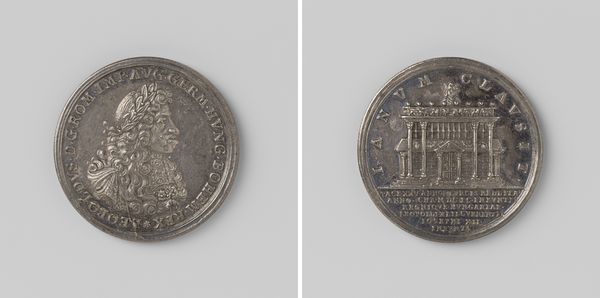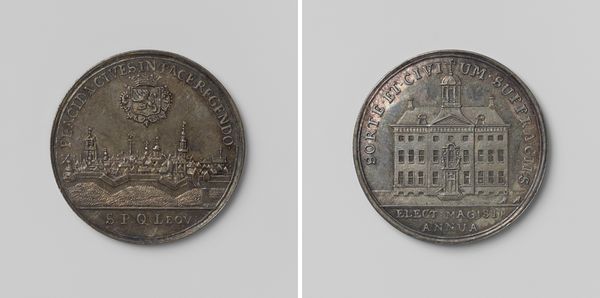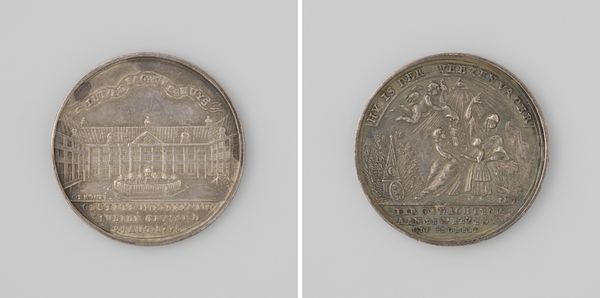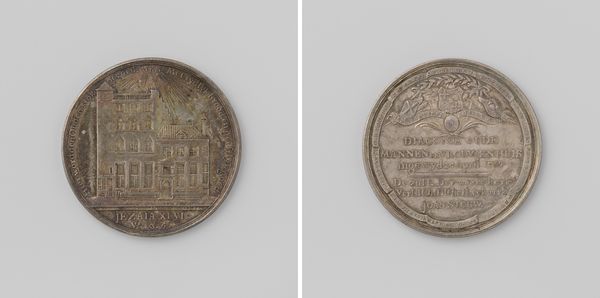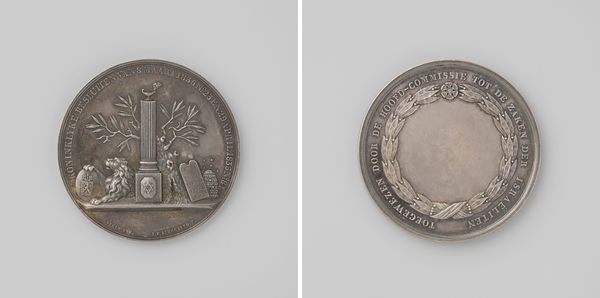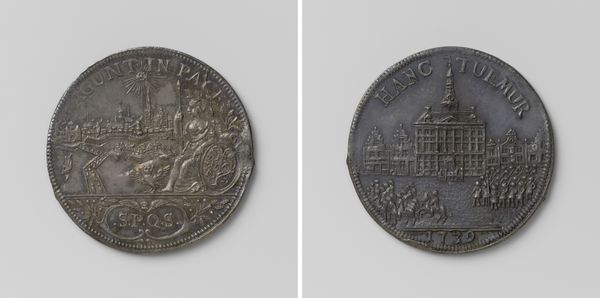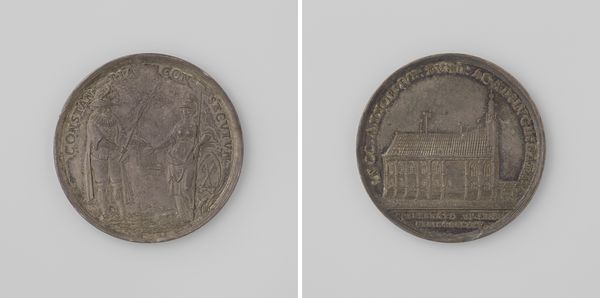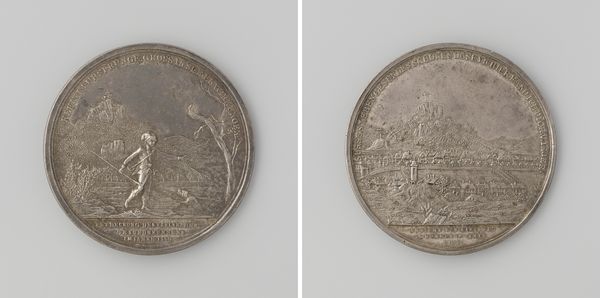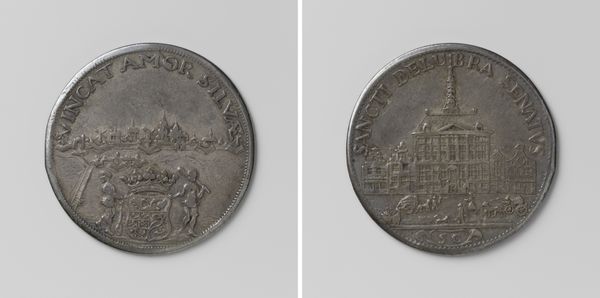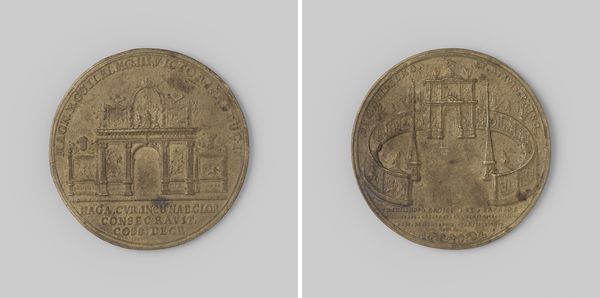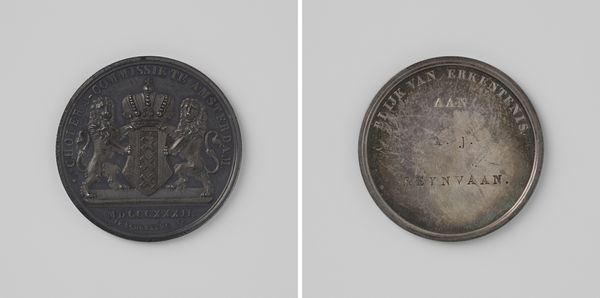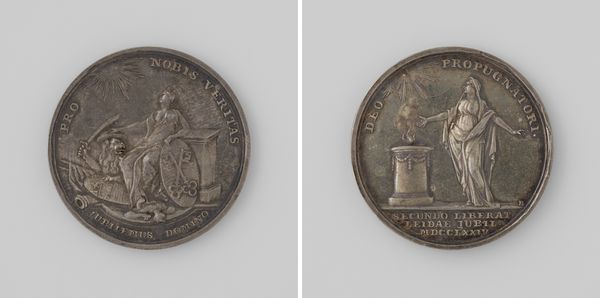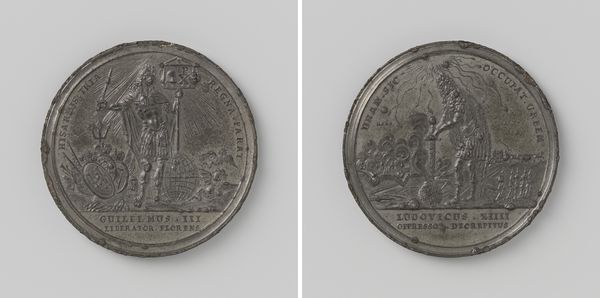
print, metal, relief, architecture
#
neoclacissism
# print
#
metal
#
relief
#
geometric
#
history-painting
#
architecture
Dimensions: diameter 4.1 cm, weight 233 gr
Copyright: Rijks Museum: Open Domain
Editor: This intriguing relief print from 1842 by Karl Fischer is titled "Samenwerking van de Duitse staten bij de voltooiing van de Dom van Keulen" which translates to "Collaboration of the German states in the completion of Cologne Cathedral". The image, replicated on metal, portrays the architectural structure from distinct angles. What is your formalist read on the composition and design of this artwork? Curator: Focusing on the visual elements, one notes immediately the stark linearity employed to render the cathedral. The verticality, emphasized by the soaring spires in the completed image, directs the eye upward, conveying a sense of grandeur. This impression of verticality is starkly contrasted by the round form and material support, literally flattening out and neutralizing any possible symbolic impact of its height. How might one reconcile that design decision in the context of architectural pride? Editor: That is thought-provoking! So you are saying the tension arises from contrasting the symbolic, uplifting subject with a neutralizing geometric form? Could the flattening effect be read as a comment about architectural space as captured in images? Curator: Precisely. Consider, too, the inscriptions which frame the image. Do these disrupt or enhance the geometrical impact of the design? One should ponder their textual weight when evaluating the purely visual design of the overall piece. Editor: The inscriptions do feel almost like an imposition, crowding the image. I see now how the artist created a dialogue, of sorts, between the architectural form and its context using text as a visual element. Thank you! Curator: Indeed. And considering the nature of printmaking further contextualizes that reading. This exploration illuminates how formalism provides a powerful means to unravel the inherent intricacies within a work.
Comments
No comments
Be the first to comment and join the conversation on the ultimate creative platform.
